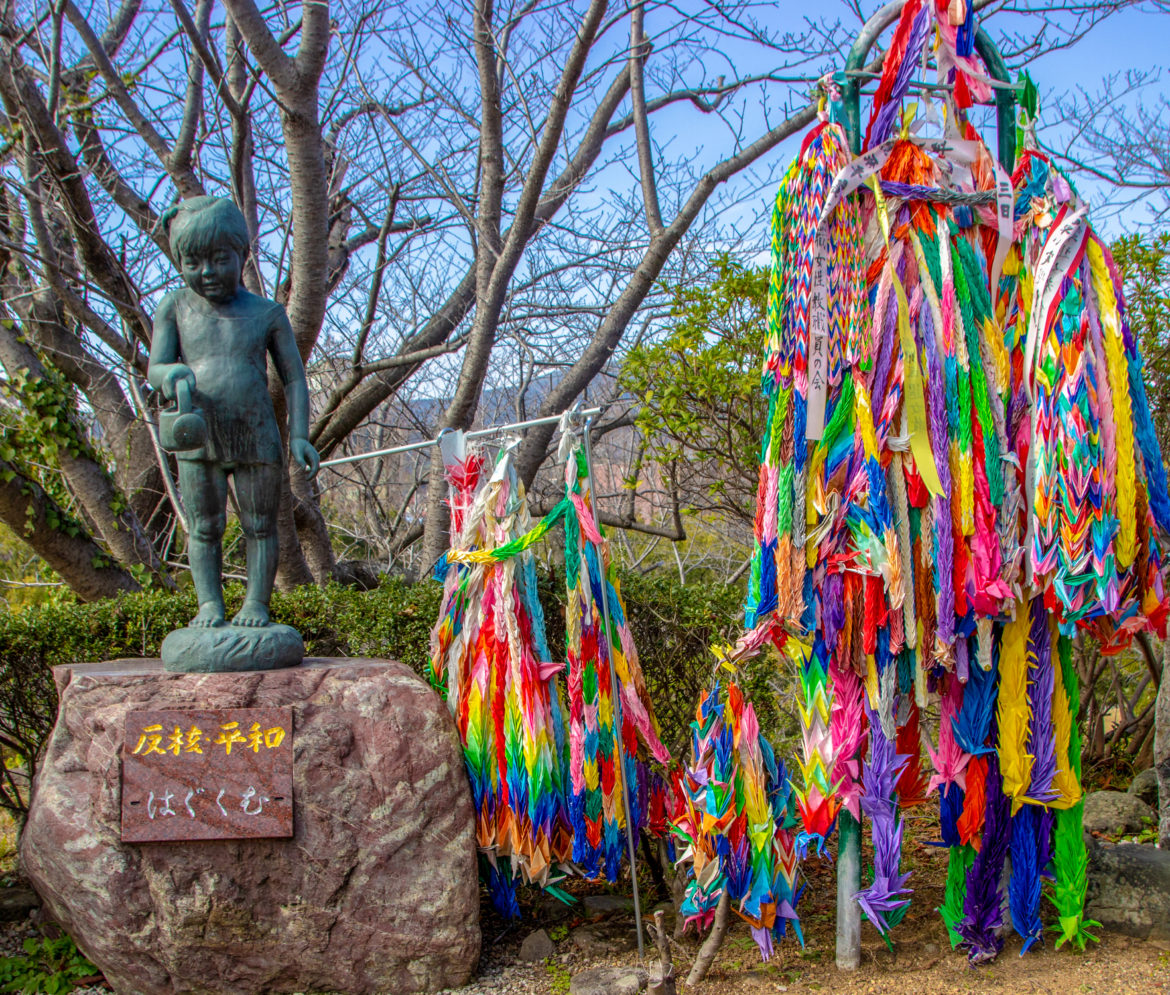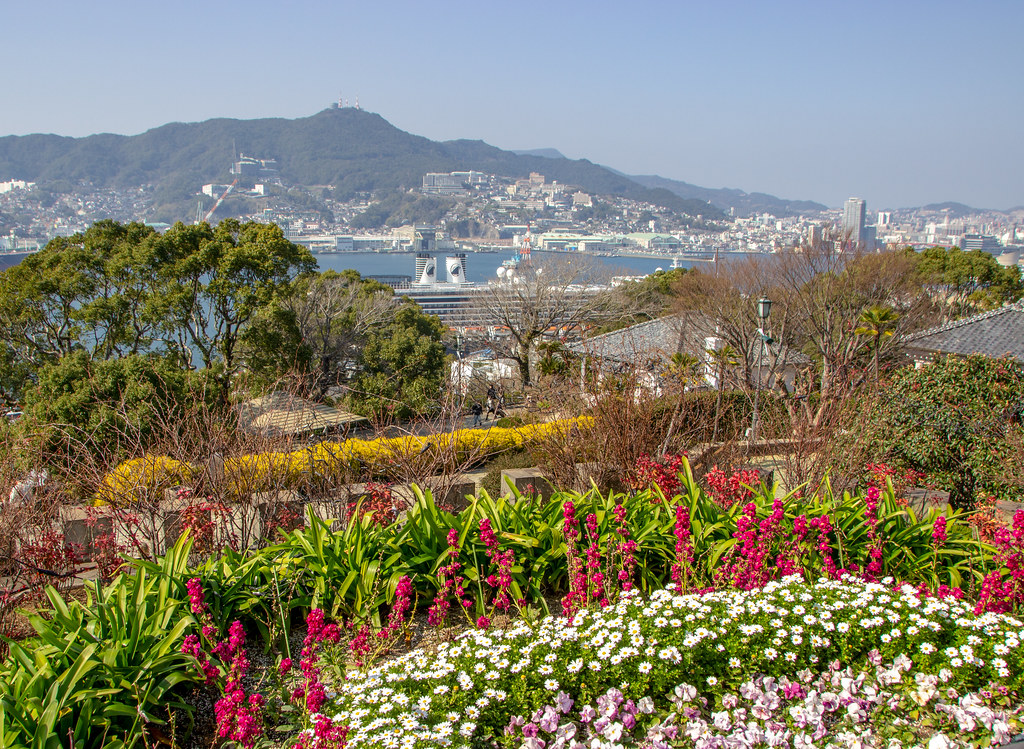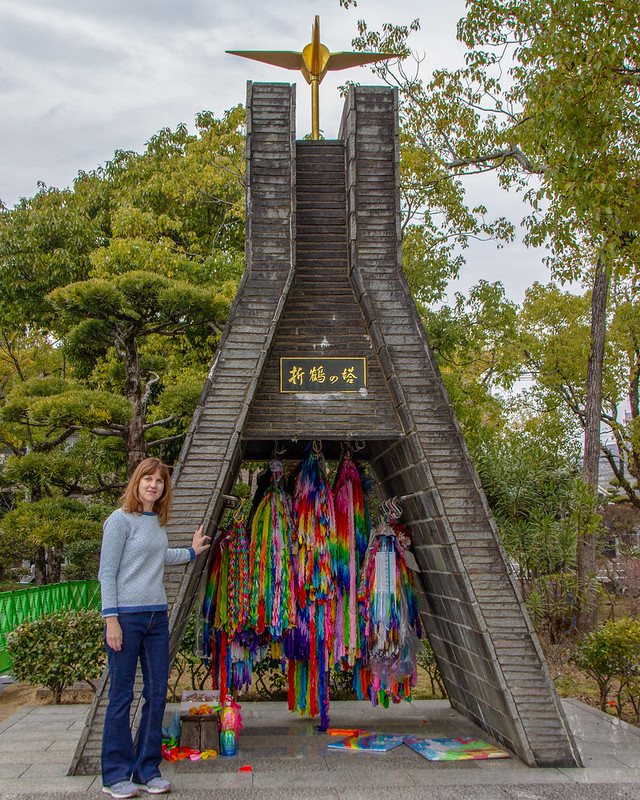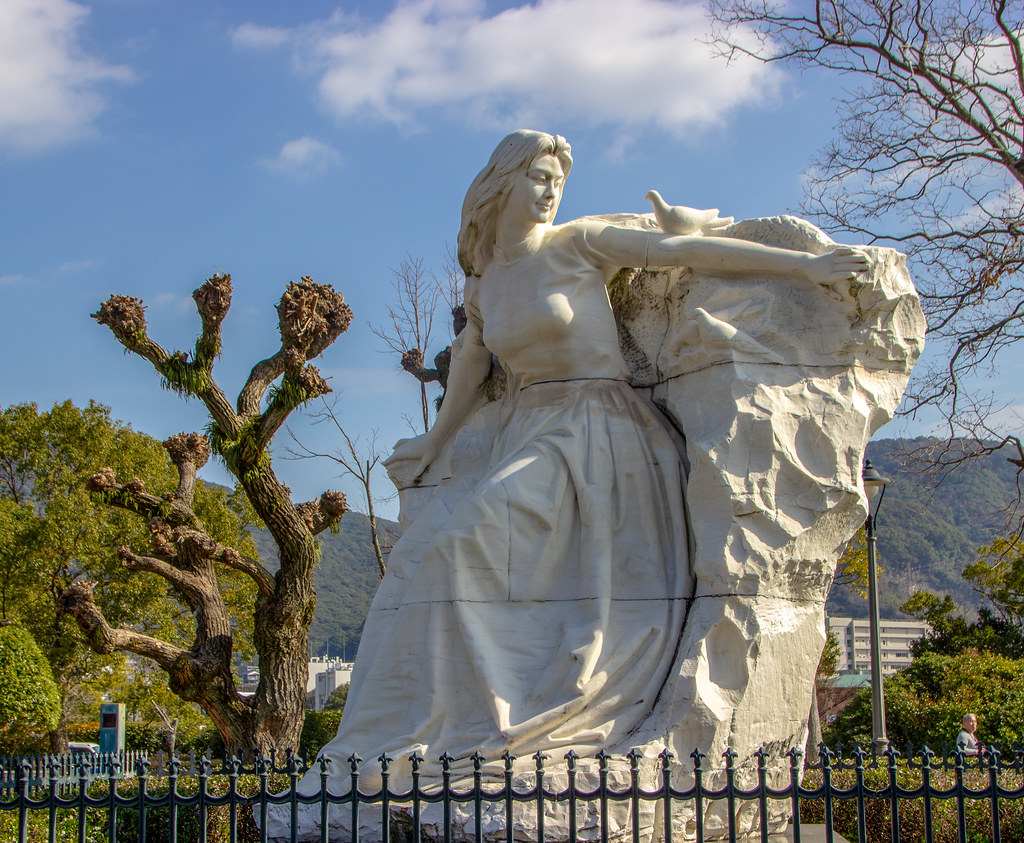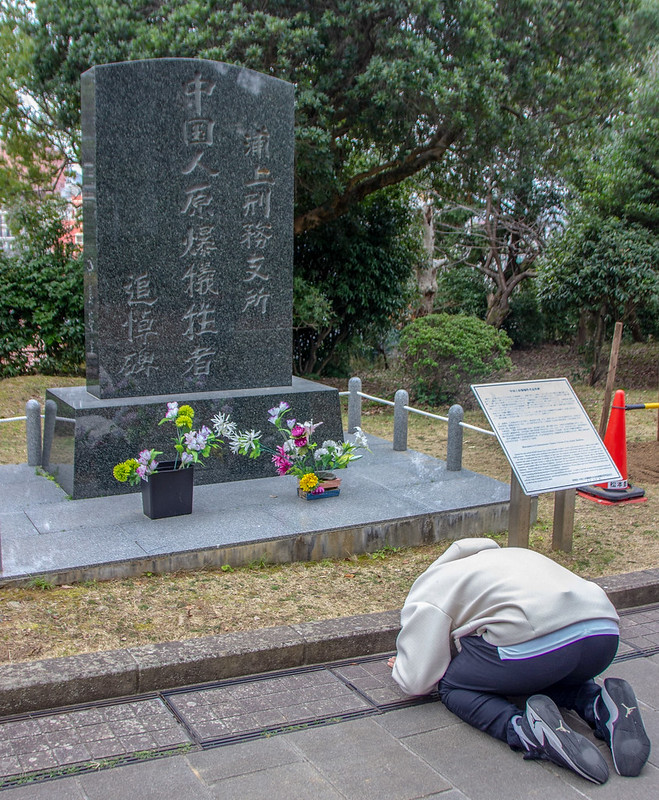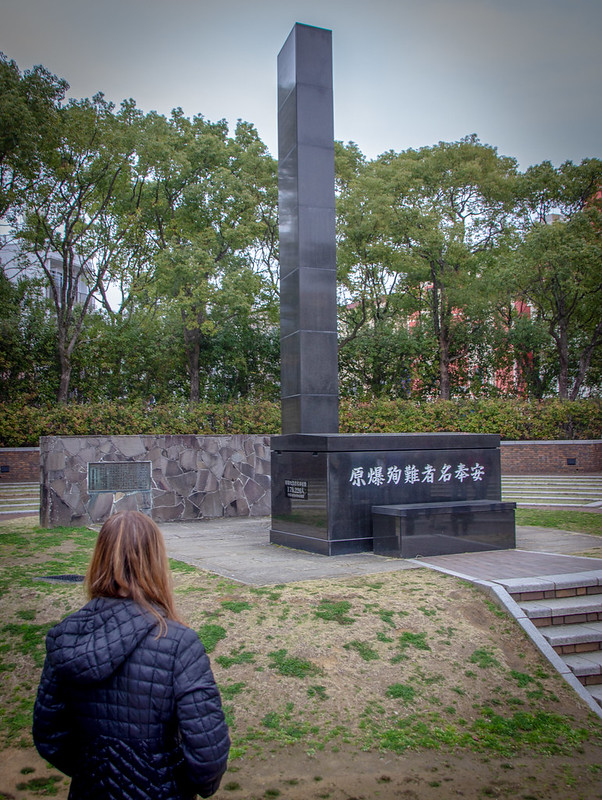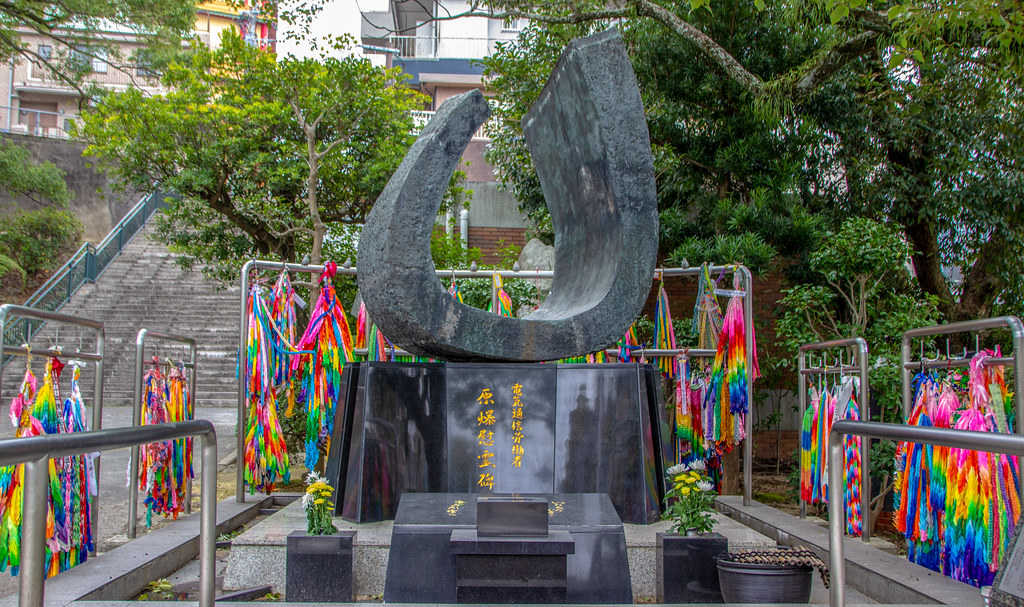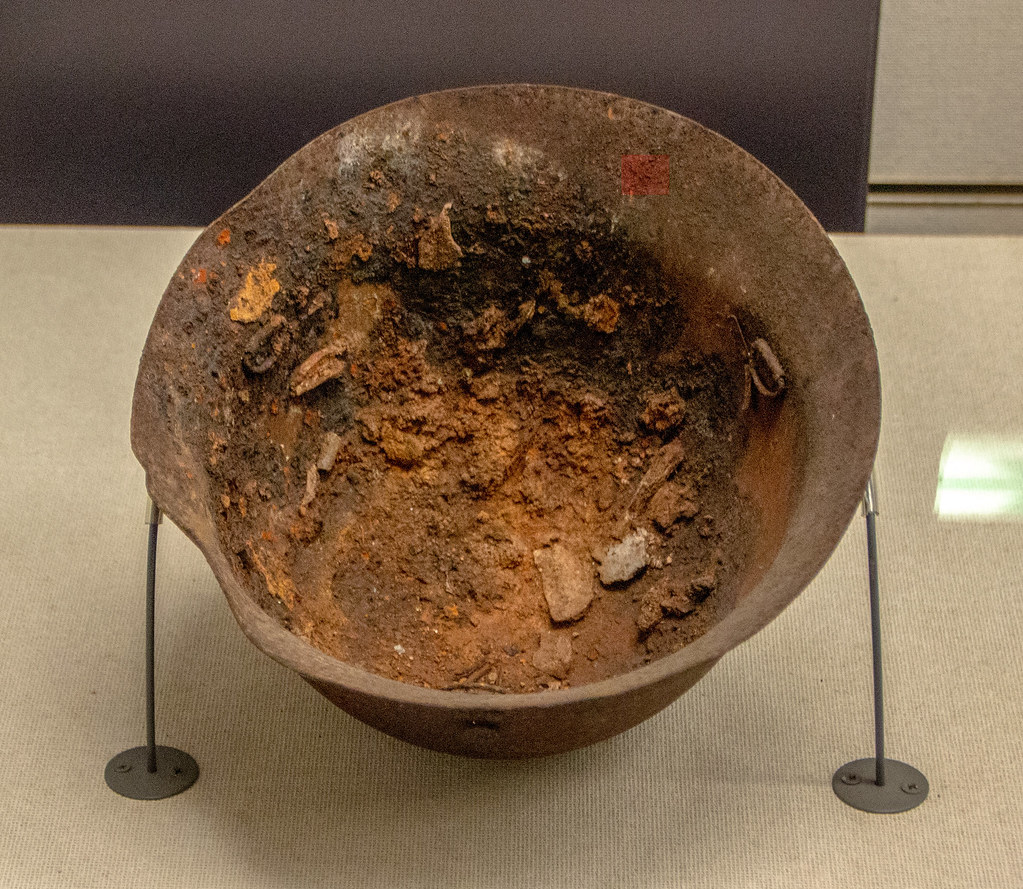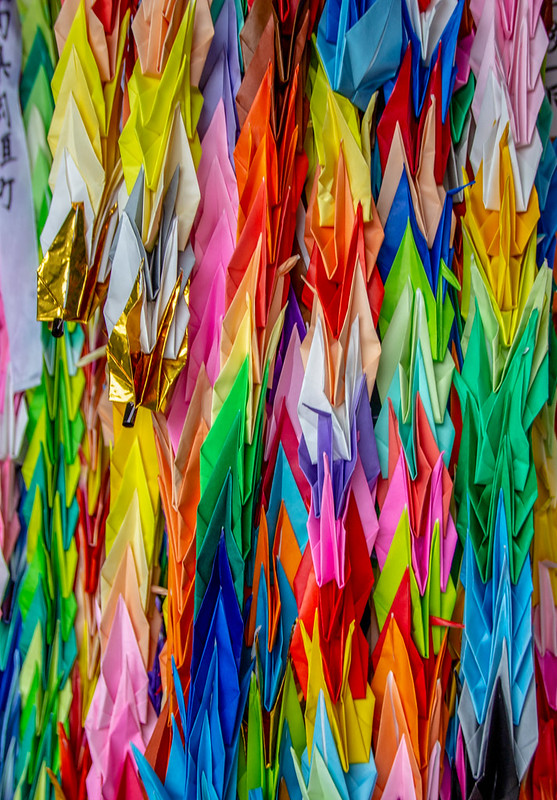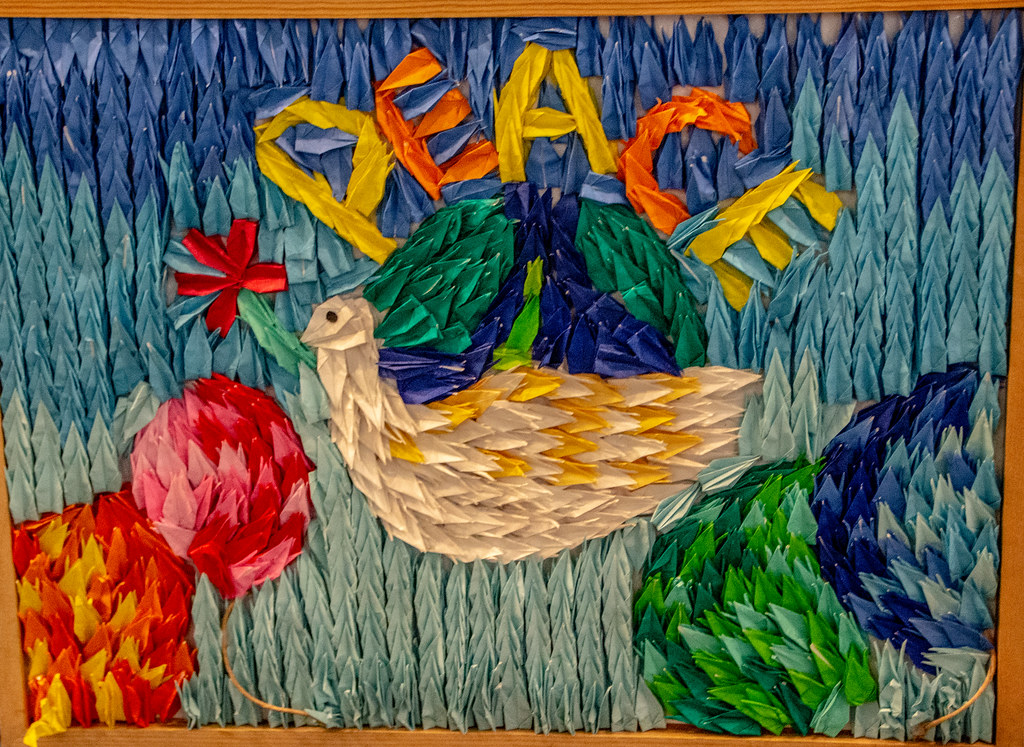The Nagasaki Peace Park and Atomic Bomb Museum stand as an evocative beacon for world peace. Here visitors can learn about this horrific event and pray for all those that have suffered from the horror of war. On a cool February day, I explored the park & museum. It was an emotional day, realizing the sad truth about the tragedies that happened here. Its statues and sculptures were donated in the name of peace by various countries, to commemorate and learn about this dark chapter in world history.
Nagasaki – a Charming Port
The charming port of Nagasaki, nestled between mountains alongside a beautiful harbor is peaceful. Therefore, it’s difficult to imagine an atomic bomb blasted this community almost 75 years ago. Furthermore, this happened just 3 days after Hiroshima’s bombing, killing more than 128,000 innocent civilians.
“Human beings and nuclear weapons cannot co-exist. The suffering we went through is more than enough. For people to truly live as human beings, we cannot allow a single nuclear weapon to remain on the face of the earth. -Sumiteru Taniguchi
Nagasaki’s transportation system is easy to navigate, with everything relatively close in distance. Hence, I purchased a day pass for the street car to take me to the Peace Park and Atomic Bomb Museum from the cruise ship terminal.
Nagasaki Peace Park
The Nagasaki Peace Park beautifully lays out among 8-acres. Moreover, its setting of mountains, flowers and trees accent the elegant statues and sculptures.
The most iconic monuments are the Peace Statue and fountain, as a place to pray for those victims who passed away whilst begging for water. The shape-shifting water evokes the beating wings to the dove of peace and the crane. Also, the crane is representative of Nagasaki port, known as the “Crane Port” due to its shape.
Expressive Monuments Donated by Other Countries
Firstly, I wandered a couple hours in the Peace Park. Certainly, in awe of the evocative memorials I offered my prayers for those who have suffered from all wars. As expected, it’s an emotional journey to realize the grave reality of this event. Many other countries donated monuments to express the support from the world community for peace.
My favorite was a beautiful white sculpture of a woman smiling and looking at a dove on her arm. It had a powerful presence, evoking a deep, feminine strength in peace and harmony. I saw at least 3 statues of women holding their child up in the air, to symbolized protection for the future generations. Their sister city, Middelburg, Netherlands donated a dramatic sculpture of a women engulfing her child, named “Protecting our Future.”
My friend from China took some time to pay respects, bowing before the monument recognizing all people from China who died from the bombing. Australia donated a sculpture entitled, Tree of Life: Gift of Peace, symbolized by the Aboriginal, Piti dish, used for carrying food and water, representing sharing of resources for peace and harmony. This sculpture acknowledged atomic survivors, worldwide, including the Aboriginals affected by the British nuclear testing in Australia. Overall, there are many more statues and monuments throughout the park from peaceful allies all over the world.
Atomic Bomb Museum
After that, I walked across the street to the Nagasaki Atomic Bomb Museum with its monuments outside. Most importantly, the black pillared epicenter stands.
The bomb exploded there, 500 meters above on August 9, 1945 at 11:02 am. As a result, the heat generated instantly killed all individuals within 1.2 km of the epicenter. Consequently, human bodies instantly carbonized and left others with fatal burns, with skin falling off in sheets.
Most importantly, we must never forget that 70% of the victims from Nagasaki were children, women and senior citizens.
Also, on the 50th anniversary, they refurbished the hypocenter and designated as a prayer zone. In addition, it’s a symbol for world peace and the abolition of nuclear weapons. An emotional sculpture stands to symbolize as with a mother and child. Throughout the peace park monuments and museum, there are colorful origami peace doves as other symbols of world peace.
Outside the museum, I observed a disturbing relief, of screaming corpses reaching out of the relief. In other words, it symbolizes, that we can still hear the women crying. Moreover, death cannot silence these peoples cry and, furthermore, it cannot happen again.
Inside the museum, I walked down a spiral path. It showed dates going back in time to 1945, where you buy entrance tickets. Firstly, I saw the exhibit of a misshapen clock stopped at 11:02 the instant the bomb went off. Furthermore, photos, art pieces, origami peace doves, videos, and relics fill the Museum. Most noteworthy, there’s a photo of a young boy holding his dead little brother on his back, waiting for cremation. Also, on display is a helmet with remains of a skull embedded in it.
Manhattan Project – Nagasaki Peace Park
There’s a display of the Nagasaki Atomic Bomb, called “Fat Man” because of its shape at 3.2 m in length and 1.52 m in diameter. I found this written about “The Manhattan Project:”
The German scientists who discovered nuclear fission in 1938 realized that the phenomenon could be applied to a bomb. The U.S. launched the Manhattan Project in 1942 and allotted a sum of money greater than the entire national budget of Japan for the development of the atomic bomb. The bomb was intended for use against Germany, but by the end of 1944 the target had changed to Japan. Hiroshima and Nagasaki, 2 of 17 cities including Kyoto chosen as candidates, were subjected to atomic bombing on Aug 6 and 9, 1945. It is said that the atomic bombs were used to hasten the end of WWII. But another purpose was displaying the success of The Manhattan Project, costing $2 Billion. Also, the atomic bombings were the first strategic move in the Cold War between the U.S. and Soviet Union.
Colorful Origami Peace Doves & Murals
Thankfully, there are colorful origami peace doves and murals interspersed throughout the museum. Most importantly, they remind visitors to learn from the past, so as not to let it happen again, as expressed in the poem below.
An enormous mushroom cloud rising.
What has happened? What has happened to the people? Please learn the reality of what happened beneath that cloud.
Do not forget. Please tell others.
Read More!
A Wonderful Day Tour at Osaka Castle & Shitennoji
Picturesque Shirakawa Village Highlights During Sakura Season

